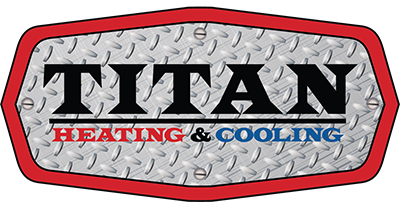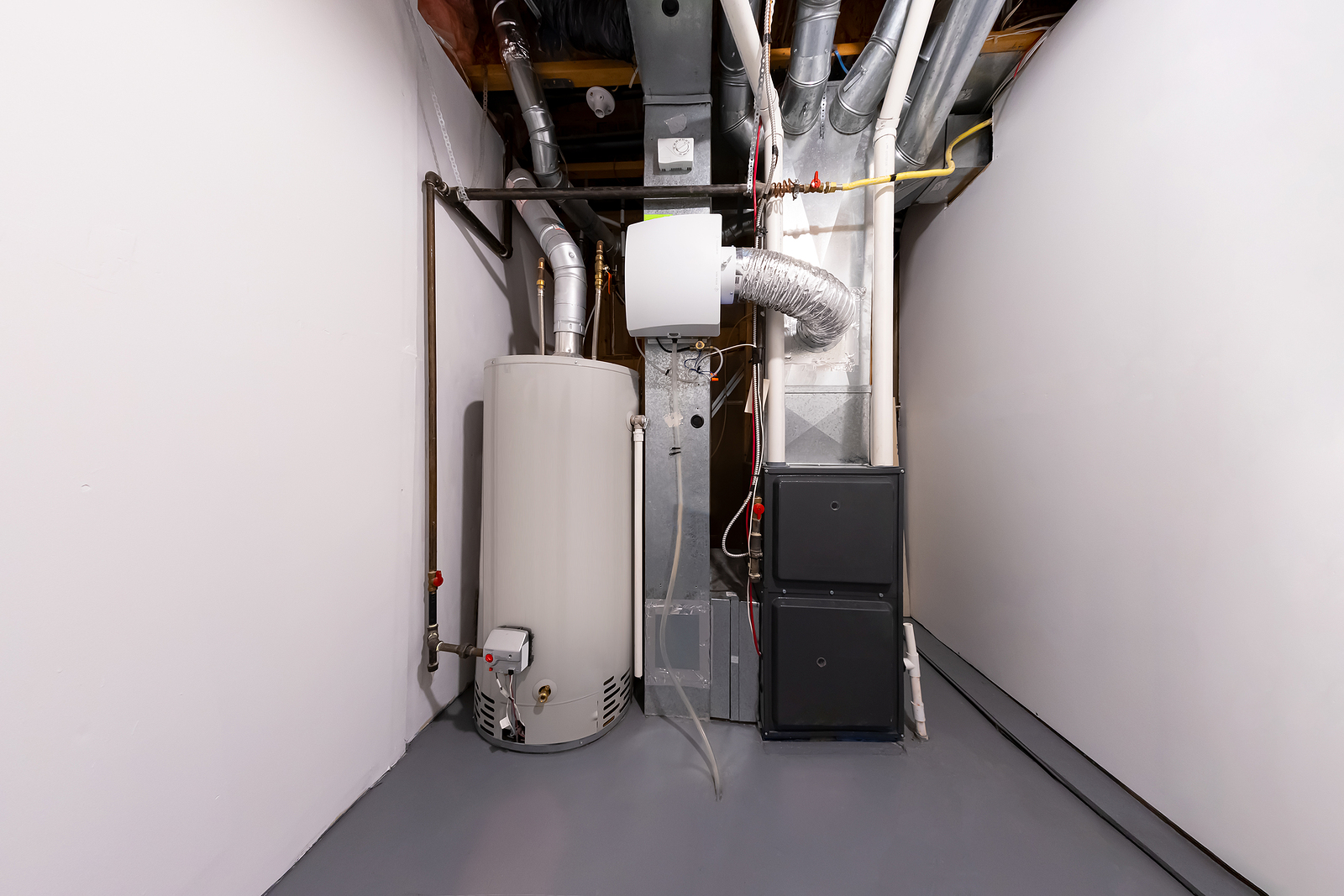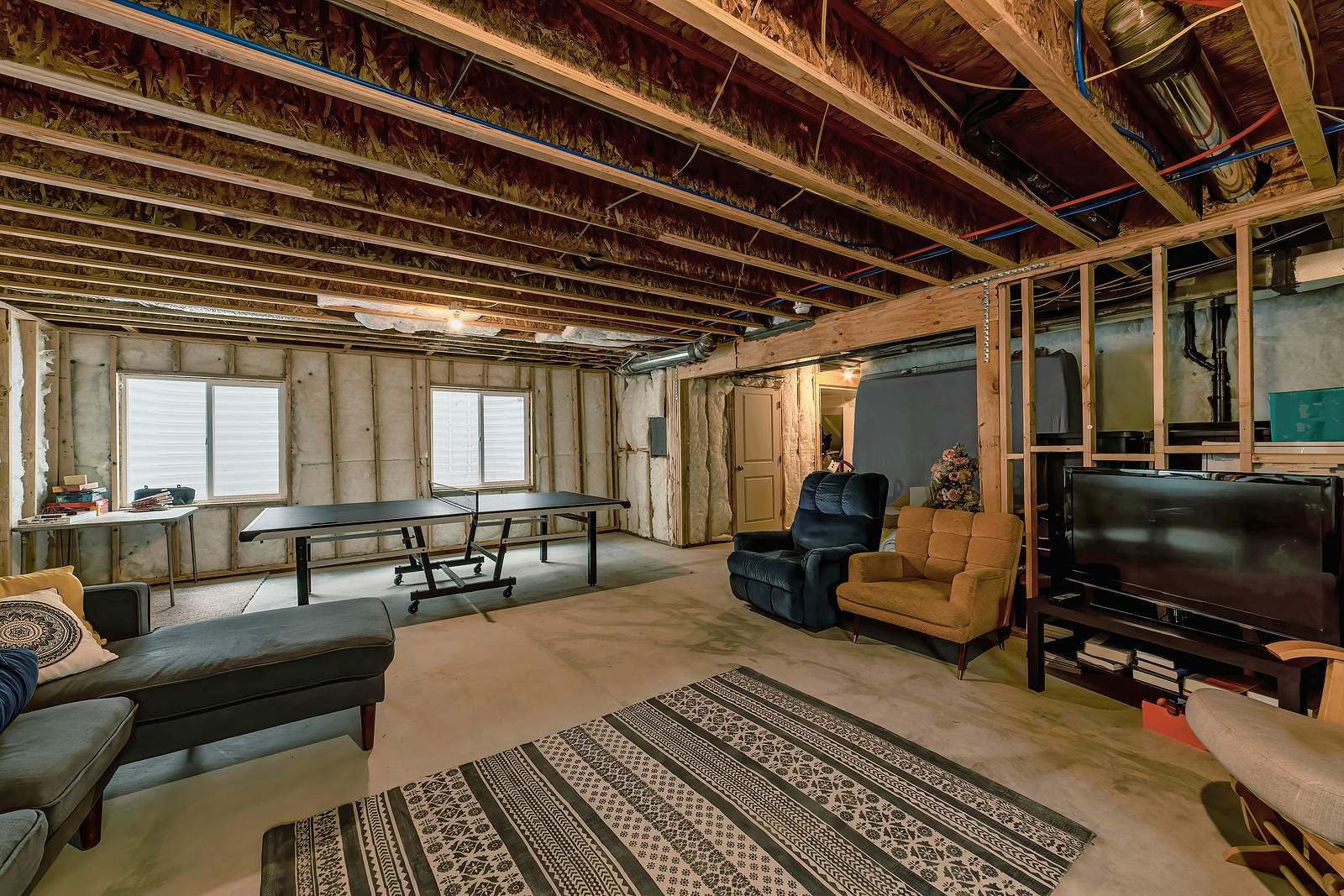There are so many ways to heat a home. Some heating systems share components with the home’s cooling system, while others work independently. Some are more effective for large spaces, while others are better for zoned heating. In some cases, a home can have more than one heating system: For example, homes with recent additions or seasonal rooms often use a different heating method for those rooms. And the different systems use a variety of fuel sources, including natural gas, propane, fuel oil, electricity, or solar. The type of heating system you have in your home will depend on several factors, including your home’s specific heating needs as well as your own preferences. Ultimately, the right home heating system will keep your home comfortable while using energy efficiently. If you’re planning a move or looking to update your existing home’s HVAC system, there are many factors to consider in choosing the right system for you. Here are five common home heating systems, with pros and cons for each, to help you make the right choice for your home. 1. Forced-Air Furnace The most common type of home heating system in North America is the forced-air furnace. It uses a heat exchanger to warm air, which is then pushed by a blower fan through a duct system to registers throughout the house. Another system of ducts then returns air back to the furnace through cold-air returns. The forced-air furnace is multipurpose, as it can be combined with a cooling system, using the same ductwork and fan. It can run on natural gas, propane, fuel oil, or electricity (but natural gas is the least expensive and most efficient). Pros: High efficiency ratingsAffordableLong-lasting: can last 15-30 years before you’ll need a furnace replacementCan be combined with A/CHeats and cools quicklyFilters and humidifiers can be added Cons: Fan can be loudGas furnaces pose a fire riskPotential source of carbon monoxide poisoning (make sure you have a CO detector near your furnace!)Can dry out the air in your home (if not combined with a humidifier)Requires space for ductwork in walls 2. Boiler and Radiator System Traditional boiler and radiator systems are most often found in older homes. The boiler works by heating water in a tank that is then sent through a series of pipes connected to radiators throughout the house via electric pumps (though some circulate steam through the pipes, rather than hot water). This type of heating system is great for providing zoned heating, but is not as efficient as a forced-air system for heating large areas. Boilers can run on natural gas, propane, electricity, biodiesel blends, or fuel oil (but most boilers in the U.S. run on natural gas). Pros: Natural gas boilers are extremely efficientEasy to control the heat in individual roomsWon’t dry out the air like a forced-air furnace canTraditional upright cast iron radiators can be updated to baseboard or wall panel options Cons: Repairs can be expensiveRadiators take up space, and you can’t put furniture or window coverings close to themCan’t combine with A/C 3. Baseboard Heaters Baseboard heaters (also known as zone heaters) send hot air out of the top of the unit while pulling cool air into the bottom. There are two main types of baseboard heaters: hydronic and electric. Hydronic baseboard heaters are essentially a modern version of traditional radiators. A central boiler heats water that then circulates through a system of piping to low-profile baseboard heating units. The boiler can run on natural gas, propane, fuel oil, or electricity. Baseboard heaters also work great as a supplement to solar heating systems. Pros: Very energy efficientRuns quietlyLow maintenancePrecise temperature controlLong-lasting — can last for several decades Cons: Takes up space, limiting where you can place furniture (units can’t be blocked)Slow to...
Read MoreOkay, so you just invested in a brand new furnace. Maybe you even went the extra mile and got yourself a high efficiency heating system. Now the question is, how do I get the most out of my investment? Here are seven things you can do to make your furnace last longer. 1. Get on a Maintenance Schedule In Minnesota, furnaces are the real winter workhorses, pulling their weight for approximately five to six months straight! If you don’t want yours to kick the bucket too early, make sure your furnace is on a proper maintenance schedule. Routine maintenance reduces chances of equipment failure, increases equipment lifespan, and helps supply cleaner indoor air. And the great news is that maintenance agreements typically pay for themselves by increasing HVAC efficiency and reducing the likelihood of costly furnace repairs down the road. The bottom line: consistent maintenance will make your furnace last much longer. 2. Keep Air Filters Clean Air filters gather dust, dirt, and other contaminants that would otherwise damage the unit. Have you taken a look at your air filters lately? If the answer is “no,” they’ll likely need replacing. In general, filters should be replaced every one to six months. If you can’t see any filter material behind a layer of dust and grime, you definitely need to change them out for new ones. Left unchecked, a dirty air filter could really damage your heating system, leading to costly furnace repairs and even replacement. 3. Program Your Thermostat The harder your heating system has to work, the more wear and tear the system will endure. A programmable thermostat allows you to program your high efficiency heating system to run at specific times of day, at certain temperatures. This increases the efficiency of your heating system by decreasing how hard it has to work throughout the winter. According to ENERGY STAR, the best temperature to set your thermostat during the winter is 68 degrees Fahrenheit when you’re home, and 65 degrees when you’re sleeping. When you’re away, lower your thermostat by 7-10 degrees for maximum efficiency. (If you have pets, be sure to keep the thermostat set at at least 64 degrees.) 4. Clean and Seal Ductwork Think of your ductwork like the lungs of your home, distributing heated air from your furnace to each room in your house. If your ductwork is dirty or has breaches or cracks, air can’t move efficiently through your home. This makes your heating system work harder than it has to, which takes the “efficiency” out of any “high efficiency heating system.” (Not to mention, this hikes up your energy bills!) Get rid of airflow obstructions and leaks by having your ductwork cleaned and sealed by a professional. Not only will this reduce the stress on your heating system, but it will also lead to better air quality for you and your family. 5. Insulate Your Attic By now you’ve probably heard that heat rises, which is why your attic is so darn hot in the summertime. But have you considered what happens in your attic during the winter? Well, if it’s not insulated, nothing good! If you want to make your furnace last longer, you need to insulate your attic. You could have the most wonderful high efficiency heating system on the market, but if your attic isn’t insulated, you’re going to lose a portion of that heat through the roof. Insulating your attic will help keep heat trapped in your home, where it belongs! 6. Run Ceiling Fans Counter Clockwise Do you find yourself standing under your favorite vent to get warm? Run your ceiling fans counter clockwise to help circulate warm air throughout your house. This will help...
Read MoreIt’s that time of year again: when we crank up the heater and hunker down, watching another winter roll through the Minnesota plains. It’s also the time of year where we start to cough, sneeze, and itch. If you, too, consider yourself a victim of winter-dryness, it’s time to talk about adding a whole-house humidifier to your home’s HVAC system. While winter dryness is uncomfortable, it can also cause a myriad of problems. Here are the top three reasons why a whole-house humidifier can be your best friend this winter season. 1. Health When we turn on our heaters, we’re pulling moisture from the air. Sure, this winter dryness can be irritating, but did you know that it can also negatively impact your health? With cold and flu season here, it’s important to note that viruses that can cause colds and the flu thrive in low-humidity environments. This means, the drier your indoor air quality, the more susceptible your family will be to common winter illnesses. The good news is, maintaining proper humidity levels in your home can actually help reduce the presence of airborne viruses, bacteria, fungi, dust-mites, and other allergens. These irritants can cause a number of health problems, including: Dry skinSore throat Runny nose Bloody nose Cough Respiratory infections Trouble breathing If you want to improve the health and comfort of your family’s home this winter, consider investing in a whole-house humidifier. Whole-house humidifiers attach to your ductwork and blow moist air into your home, raising your home’s humidity levels. And, with systems like the AprilAire whole-house humidifiers, you can control the humidifier from an app on your smartphone. 2. Home Wood is hygroscopic, meaning that it readily takes up and retains moisture. Wood reacts to the relative humidity of its surrounding environment to find equilibrium, meaning that moisture–or lack thereof–can actually change the volume and integrity of the wood. So what does this mean for you? Well, if the air in your home is too dry, your wooden floors, cabinetry, and anything else wooden is susceptible to cracking and warping. To preserve the beauty of your home’s wooden features, make sure your humidity levels are maintained between 30 and 55%. Most whole-house humidifiers come outfitted with digital controls, making it easy to maintain your desired level of humidity. With the proper humidity, your wooden floors and features will maintain their luster for years longer. 3. Energy Efficiency As these midwestern summers remind us every year, higher humidity levels can make the air temperature feel anywhere from 1 to 5 degrees warmer. This is because, thanks to the moisture content in the air, the body’s perspiration evaporates from the skin at a much slower rate, which makes it harder to cool off. During the winter time, though, the humidity is on your side, helping your body maintain its heat. This also means that if the air in your home is too dry, it can actually feel colder than it is. Without the right level of humidity, you’ll find yourself reaching for the thermostat more often, which means you’re putting more stress on your heating system. This also translates to a higher energy bill at the end of the month. At Titan Heating & Cooling, we’re all about efficiency. A whole-house humidifier can help you reduce your energy bill and make your home more energy efficient. You’ll also spend less money on hvac maintenance throughout the year if you use your heater less often! Need a Home Humidifier Installed? Trust Titan Heating & Cooling At Titan Heating & Cooling, not only do we specialize in AC units, heating systems, and HVAC maintenance, but we also offer only the best in humidifier technology: the AprilAire Whole-House Humidifier system. We carry various models of the...
Read MoreAs the chill of September creeps in, Minnesotans know that the frigid winter months aren’t far behind. And though, with the cold months, we must wave goodbye to summer’s outdoor-hobbies, mechanics and DIYer’s still have the option to enjoy their pastimes comfortably in their garage. If the garage is heated, that is. This month, we’re taking a break from talking about HVAC maintenance, and helping with tips and recommendations to keep your garage warm this winter. There are two major components of making your garage a livable temperature: insulation and an efficient heating system. Seal and Insulate Before we even think about heating the garage, it needs to be properly insulated. If it’s not insulated, any heat that gets pumped into the garage will quickly diffuse through the walls, windows, and the garage door. Walls: Most garage walls are just studs that are covered on the outside with sheathing and siding. That means they aren’t insulated like the rest of your home. This makes heating and cooling the area much harder. Luckily, insulating garage walls is a fairly easy task: layer batt insulation between the studs and install plywood sheets or drywall panels to cover them.Windows: If your garage has windows, they’re more than likely letting in some kind of draft. To mitigate this, you can air seal your windows by applying weather stripping and caulk. (Check out our other blog about how to air seal your home for more details on how to do this.) You’ll also want to insulate your windows using a window insulation kit. Simply apply the film to your window and use a hair dryer to shrink it until it fits snugly to the glass. The film will help keep the warm air in and the cold air out.Floors: There’s nothing worse than a freezing-cold garage floor. If you’re planning on working low to the ground (looking at you, mechanics), you’ll definitely want to invest in some kind of garage floor-covering. Even if you’re not planning on being close to the ground, covering your garage floor will instantly make the room feel warmer. Outdoor rugs work well for this, or you could install interlocking rubber mats for extra padding. Door: You’d be hard-pressed to keep your garage warm without fixing up the garage door. Not only are standard garage doors thin and uninsulated, but they also have many gaps on the sides where the door meets the frame. Apply weather stripping to the garage door frame to seal up any gaps. As for insulation, invest in a garage door insulation kit. These kits make it easy to install pre-cut panels of insulation. Choose Your Heat Source Now that we’ve covered how to keep warm air contained in your garage, we can finally talk about choosing a heating system. There are a multitude of products available that will keep your garage warm, but finding the heating system that’s right for you will depend on your budget, the size of your garage, and the garage’s purpose. Portable Space Heaters Space heaters are small, portable heaters that generate warmth via electricity, propane, kerosene, or natural gas. Space heaters such as baseboard heaters and ceiling-mounted space heaters are great options for keeping your garage warm. There are some downsides of space heaters: first of all, they can pose a fire hazard if handled incorrectly. Second, if they operate off of electricity, they can run up your heating bill quite a bit. So you’ll have to be mindful of when you turn them on and how long you run them. Hot Dawg® Garage Heater If you’re looking for a heating solution with versatile installation options, the ceiling-mounted Hot Dawg® Garage Heater frees...
Read MoreBasements are notoriously chilly, especially in our cold northern climate. If you only use your basement for storage, you may not need it to be warm and cozy. But if you have a basement family room, bedroom, or bathroom, you need it to be comfortable enough that you actually want to spend time down there. If your basement is freezing, there are a variety of tactics you can use to turn up the heat and improve energy efficiency. Here are a few ways to keep your basement warm this winter. Seal Leaks Cracks or gaps in your basement walls or floors allow cold air to seep into your home and heated air to escape. Check for cracks in the foundation, flooring, and walls, as well as gaps around windows and doors. Seal up small cracks with the appropriate caulk, foam insulation, or weather stripping. If you notice a significant crack in your home’s foundation, have a professional take a look at it to make sure you don’t have bigger issues on your hands. Update Older Windows Replace old drafty windows and doors with new, energy-efficient options. If your windows are warped, broken, or have damaged seals or single-pane glass, it may be time to swap them out. When replacing windows, choose energy-efficient varieties, such as double- or triple-paned glass windows. Add More Insulation Insulation reduces the rate of heat transfer in a space — in other words, it keeps warm air in and cold air out. If your basement isn’t insulated sufficiently, it won’t retain heat as well as it should, and your other efforts to keep your basement warm won’t be as effective as they would be otherwise. If your basement already has interior walls covering the foundation, you may be able to add additional spray foam insulation. If your basement foundation is visible, you might want to consider framing in your basement walls so you can add insulation. In addition, check to be sure you have enough insulation around windows and doors, and add more as necessary. Install Carpet or Add Area Rugs Your walls aren’t the only factor in keeping your basement warm: the type of flooring you have plays a role as well. If you have bare concrete floors, consider covering them up with wall-to-wall carpet or area rugs. Not only is carpet nicer to walk on, it can also help insulate your floor and keep your basement warmer. Even placing throw rugs over the more highly-trafficked areas of your basement can help keep your feet warm and insulate the floor a bit. Note that if your basement tends to leak or flood regularly, you’ll want to take care of that first before installing carpet or rugs. Install In-Floor Heating An in-floor radiant heat system is another way to warm up your basement. These systems circulate hot water beneath your floor, warming the cement. That heat rises throughout the room and keeps your basement warm. Keep in mind that in-floor heat is easier to install in a new construction home. It is still possible to install in existing basement flooring, but the process is more involved. Add an Electric Baseboard Heater or Wood Stove You could also consider installing an individual heating unit in your basement, such as an electric baseboard heater or a wood or pellet stove. If you’re up for hauling firewood or bags of wood pellets into your basement, a stove can add cozy ambience in addition to heat. Electric baseboard heaters aren’t as attractive as a wood stove, but if that’s not a concern for your space, they’ll do the job well. You’ll need one for each room, as the heat from baseboard heaters doesn’t easily travel from room to room. You can...
Read More





